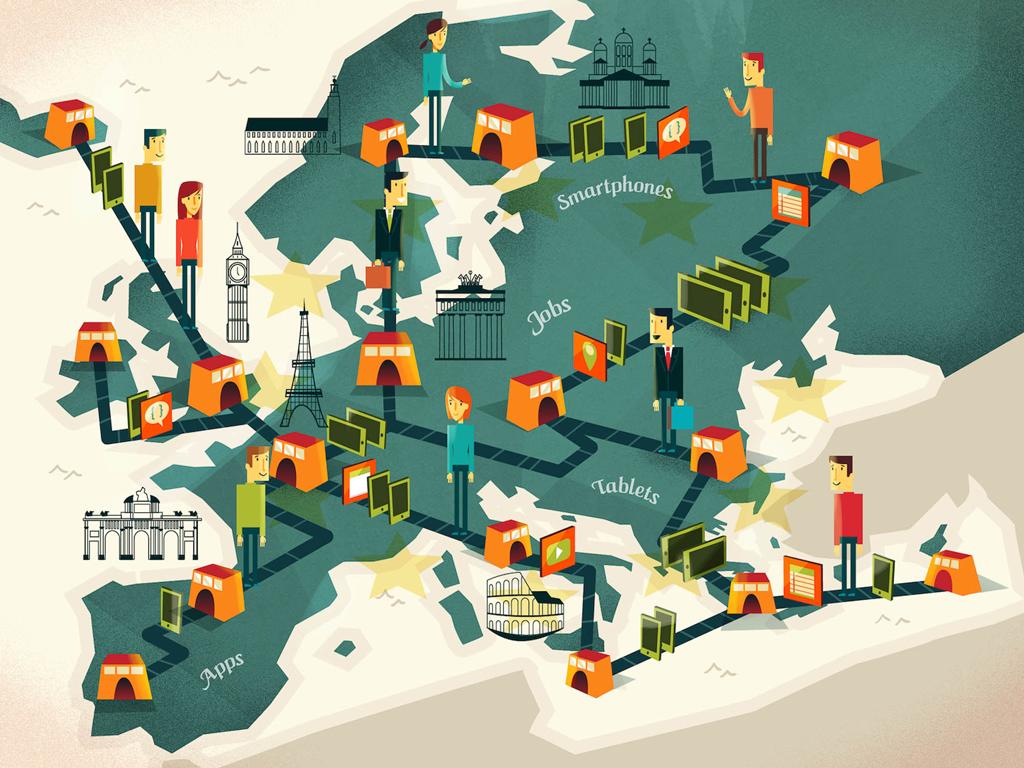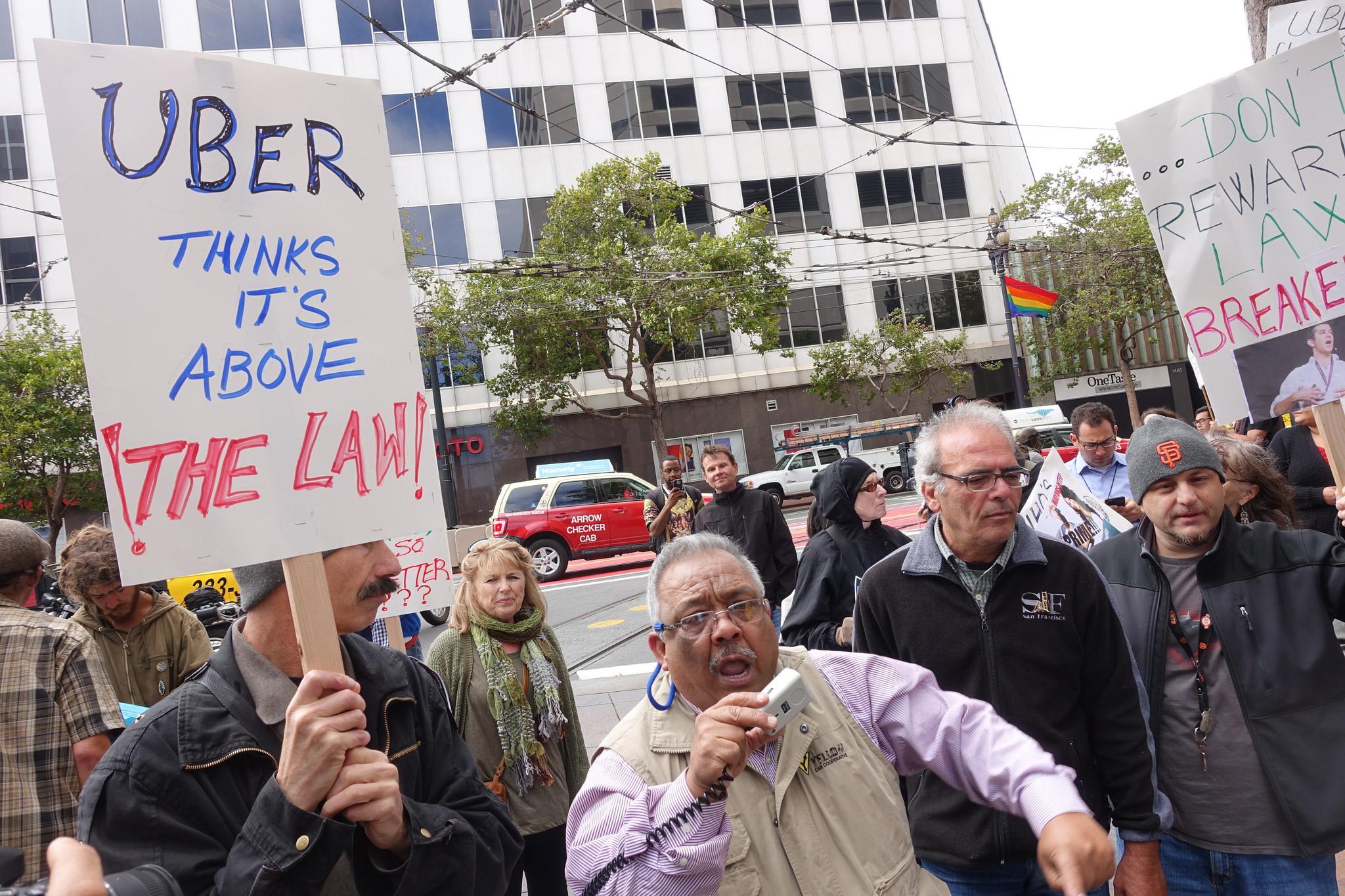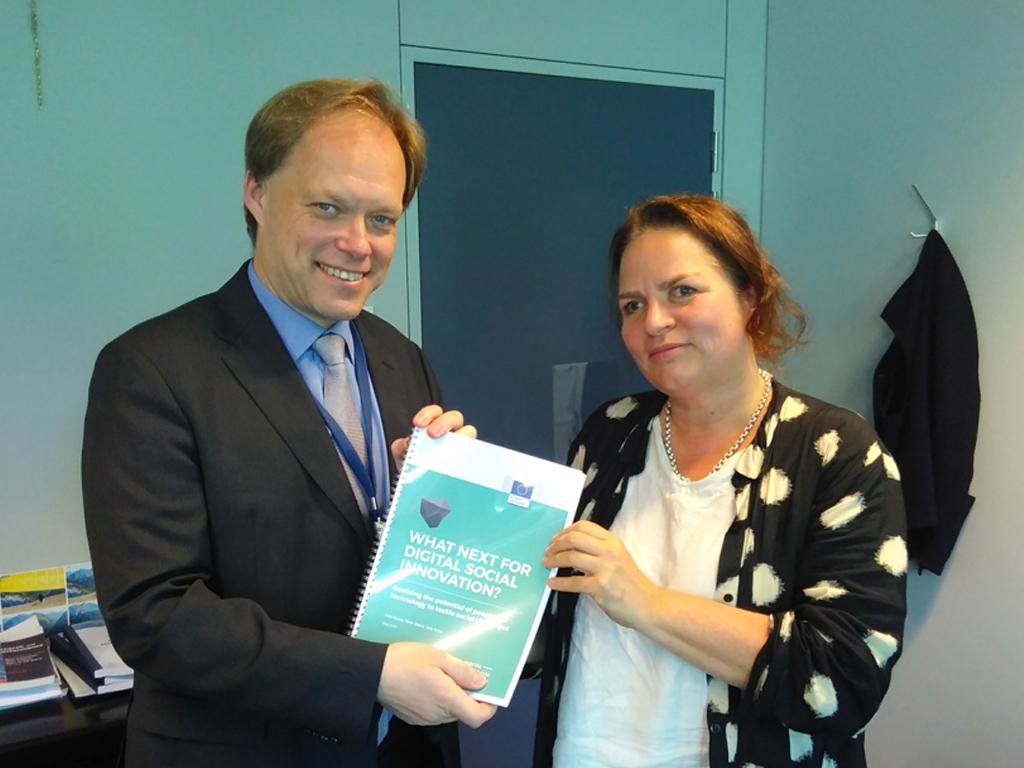The big question is this: do administrators and politicians understand what the consequences of the “smartness” they are injecting into public infrastructures?
Recommendation 1: Focus on peer-to-peer technology.
In its infancy, the Internet’s designers opted for an architecture of distributed communication. This means that, within the network, each node is equal to any other node without the intervention of a central source. Such networks are often called “peer-to-peer” (P2P)—equal to equal. Within these networks, everyone has access to the same tools without having to ask for permission.
This distributed, horizontal architecture of the Internet has been the determining factor for its disruptive nature. It undermines traditional hierarchies, and provides opportunities for newcomers to upset antiquated business models in no time.
This leads to an on-going struggle between old and new powers. To keep the Internet open to new entrants and provide everyone the same opportunities, net neutrality remains crucial. Unfortunately, net neutrality often comes under pressure politically, and must be defended from those with ulterior motives.
The “open” Internet has also been the basis for the explosion of digital social innovation in our modern society. Its structure offers people opportunities to create things of real value through self-organization, sharing, and the production of knowledge and goods.
Not as isolated individuals, but as networked innovators in contact with peers around the world. Through international cooperation, digital tools have become sophisticated enough to create sustainable and scalable economic models. P2P Foundation keeps track of all these developments on their blog, which I highly recommend.
The term “sharing economy” often crops up when discussing these new models. But, beware, it is a treacherous term. “Sharing economy” is often used to describe the business model of companies like Facebook, Google, Airbnb, and Uber.
These companies subscribe to values that are fundamentally different from a “sharing economy”— values that make the term “capitalism platform” seem more appropriate. In the hands of companies like these, Internet users’ data is centrally stored and exploited.
To assess whether a new service is truly social and reciprocal in nature, you first must analyze its business model. Who is the owner? Is the technology open or closed? What is their policy on data? Is production process a fair one?
For sustainable economic transformation, it is better to avoid companies driven by shareholder-value, and back organizations driven by social values. That means that procurement processes should favor open and fair technologies and in this way you can maximize the power of social entrepreneurs, citizens, and p2p initiatives.
Care should always be taken when making policy, and in the development of innovative tools that not only large companies and research institutions are allowed to sit at the table. Small and medium sized companies should be actively involved in these processes.
In addition to economic development, digital social innovation has the potential to enhance technological literacy. A good example of this potential is The Smart Citizen Kit project.
The project allows people to measure environmental variables (e.g. air quality, noise levels, etc.) themselves, and to share the information they’ve gathered with others. This produces data (and visualizations of that data) that policymakers and scientists might find interesting.
More than that, participation in this project helps to increase awareness and understanding of measurement. By being involved in the generation of data, and by using open source hardware and software, people begin to understand that measurement is not an objective process. Such an insight is of great importance in an era where salvation is expected to appear in the form of big data.
To give meaning to data, we need algorithms to analyze it. And, the results of these analyses often provide arguments for policy.
But, what are algorithms? Who designs these models? And what is their worldview? Instead of simply focusing on opening up data, we must also focus on opening the computer models and algorithms used to analyze the data that informs the policies upholding our democracy.
Recommendation 2: Be open. Be fair.
The credo of the “Maker Movement” is: “If you can not open it, you do not own it” (Maker’s Bill of Rights). Yet, while products are becoming smarter, we seem to be getting dumber.
We can barely open up our smart devices without the risk of destroying them. The concept of “self repair” no longer exists. Take the car, for example. Until recently, a car was something you could repair yourself. All right, maybe not yourself, but surely the neighbor or the garage around the corner could take care of it for you.
These days, cars house mobile computers that rarely disclose their secrets.
Starting in 2016, all cars in Europe will be equipped with a black box, called an “e-call,” which will be able to independently contact emergency services. Europe has decided that the car is no longer private property by including a component that you can neither open nor remove, and that constantly keeps watch over you.
Unfortunately, this applies to many smart city solutions: you can not open them. Before governments make such technologies law in our society, they must be the subject of civil debate.
New technologies should abide by the values you uphold as a society. Providers should be assessed on questions like: Is the technology based on open hardware, open source, and open data? Is the idea of “Privacy by Design” taken into account? Do they make use of a distributed peer-to-peer model? And, last but not least: Is the production process fair and sustainable?
It should be a fundamental principle that a government only invests in open technology. Currently, when municipalities have to choose between two administrative systems, there is no semblance of an open market.
There are usually only two players in the game. You either choose this one, or the other; and—whatever you choose—you’re stuck with it for decades to come. We’d be much better off using systems based on open technology.
Additionally, we must ensure that publicly purchased technologies are fair technologies. We must realize the suffering that often hides behind many gadgets and technologies.
Think about the exploitation of children in the mines of the Congo, or the miserable working conditions in China. Not to mention the toll manufacturing process takes on the environment, and the gigantic mountain of e-waste it generates. It is our task to strive for fair technology and build on an economy that puts human rights in the center.
Recommendation 3: Work within the “Quadruple Helix” model with the citizen as a full partner.
In one of its reports, the OECD called for better cooperation between government, industry, and academia by bringing all three together in a so-called “Triple Helix.” Since then, all economic advisory bodies are based on the interactions of these three entities.
The main problem with this model is that society gets completely pushed aside. Here and there, one hears murmurs of the “Quadruple Helix”: the idea that citizens should be central to these decisions.
Yet, idle thoughts and whispers rarely result in substantial change. Social actors belong at the table, and should be involved in policy and decision making processes.
Another problem with this model is that innovation does not necessarily originate in large companies and universities. Digital social innovation also comes from the broad, inventive ecosystem of creators, hackers, and social entrepreneurs. In the search for disruptive solutions, we need innovative strategies based on those outside the “Triple Helix”.
Recommendation 4: I’m smart, too.
Not a day goes by without some sort of Smart City initiative cropping up. The Smart City movement is convinced that technology is the answer to big city problems. But technology is not neutral, and must always be questioned.
Without technological literacy, we can only consume, and never produce. Only read, never write. If systems are smart, but we remain “stupid,” can we really say that we’ve progressed?
The major goal of our time is to become smarter and more tech-savvy. This is true not only for the youth, but also for those who currently hold the controls: the people responsible for making policies.
Smart City technologies introduce a huge dependence on suppliers, and IT departments within the public sector often struggle with the vendor lock-in that can accompany administrative systems. Only the suppliers can read and update their proprietary software.
So, who will hold the key to the smart city? Administrators, politicians, IT departments? Or the shareholders of companies? The companies that would just as soon sell their SmartCity software to North Korea as they would sell it to the Netherlands?
The big question is this: do administrators and politicians understand what the consequences of the “smartness” they are injecting into public infrastructures? Take the great promise of “smart lighting,” a showpiece for the energy saving, sustainability agenda. With smart lighting, the light only turns on when someone walks past a sensor. For some people, this provides a sense of security.
Others find it a sinister thought that someone with bad intentions could be waiting for them in the darkness. Depending on the context, light can mean the difference between life or death.
At the border between Mexico and America, for instance, simply walking with a flashlight can mean being shot on sight. Smart lighting might save energy, but it introduces a social dilemma. Will we sacrifice safety for the sake of efficiency?
Let us ask ourselves these questions before we inject technology into the bloodstream of the city, and consider carefully the models and algorithms that will affect our reality.
Let’s make sure that those who are making decisions about the future of our cities have a real understanding of what technology means. Learn what code is, and the standards and values inherent to it. Only then can you make the right choices.


